What’s old is new again: Stanford’s newest library in the former Old Chem
The Robin Li and Melissa Ma Science Library combines biology, chemical engineering, chemistry, mathematics and statistics collections in a bright, relaxing space sprinkled with hints of the building’s history.
If walking through the doors of the Robin Li and Melissa Ma Science Library feels a bit like stepping back in time, there’s good reason for that. The thoroughly modern library, housed at the top of the carefully restored and reimagined Sapp Center for Science Teaching and Learning, features many tributes to its past as part of Old Chem.
The Sapp Center is the first completed element of the future Biology Chemistry Quad, which is structured to promote greater unity among the basic science departments. It contains shared lecture spaces, classrooms, meeting rooms and study areas, and labs able to switch between serving chemistry and biology. For its part, the new library combines the university’s biology, chemistry, mathematics, statistics and chemical engineering collections in its split-level space in Sapp’s uppermost floors.
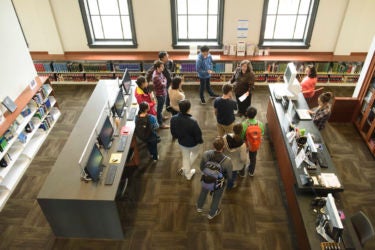
Image credit: L.A. Cicero
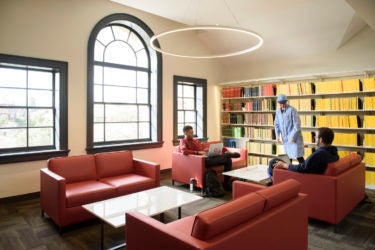
Image credit: L.A. Cicero
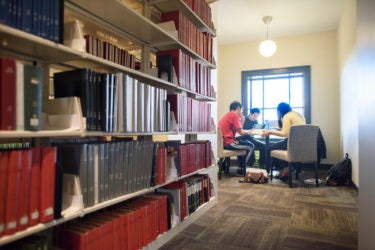
Image credit: L.A. Cicero
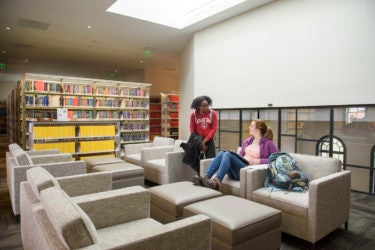
Image credit: L.A. Cicero
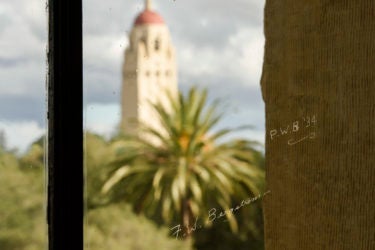
Image credit: L.A. Cicero
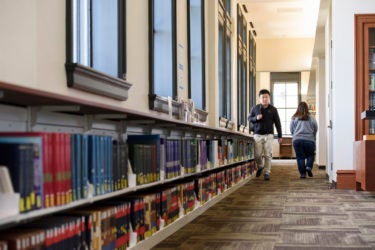
Image credit: L.A. Cicero
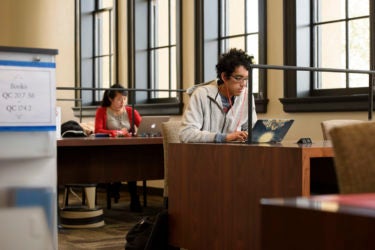
Image credit: L.A. Cicero
One of Jane Stanford’s five “noble” buildings, Old Chem was closed in 1987 due to safety hazards and damaged in the 1989 Loma Prieta earthquake. After decades of disuse, it developed a rather unbecoming reputation – at the dedication of the Sapp Center, speakers jokingly described it as “Stanford’s unofficial haunted house” and a “wildlife sanctuary.” But these jabs at the building’s troubled past make its rebirth all the more rewarding.
“For years, I passed this building when it was shuttered and a little scary. It looked like a ghost house,” said Bob Schwarzwalder, interim director of the new library. “To see it return to life and return to service is a real pleasure.”
Mixing old and new
Compared to other libraries he helped develop, Schwarzwalder said the Li and Ma Science Library has an unusual layout due to its being built inside an already established structure. Meeting rooms aren’t located side by side, but are split and mirrored on either side of the library’s main entrance. The physical collection, spanning a floor and a half, wraps around an assortment of desks and seating areas.
The library has an orderly aesthetic that includes many homages to its former life. Wood paneling running outward from the front doors of the main entry was salvaged from Old Chem but flipped to take advantage of its nearly pristine underside. Inside, the soapstone countertop at the front desk came from Old Chem’s lab tables – relics that Schwarzwalder hopes people will be gentle with as the soft surface scratches easily.
Visitors who gaze out the library’s windows may notice that some have a rippled texture. Yet another original material preserved from Old Chem, the glass dates back to a time when panes were flattened from blown glass globes or cylinders, resulting in a distorted surface. With some careful investigation, you can even find one pane where students from decades past etched their names.
Although it revels in its history, the library is designed for contemporary use. Desks are made to accommodate personal laptops, and library computers are available at the kiosks. The furniture is sleek with pops of color and includes a couple of standing-height options. It’s not open yet but the library will run a 24-seat training room on the top floor for workshops on topics such as the Python programming language, geographic information systems and literature-related software, which have been popular offerings in the past that didn’t always have suitable accommodations.
Inviting space
Standing in the entry of the library provides a view of the large arched windows that dominate Sapp’s façade. The four rooms that contain the stacks on the third floor are each ringed with glimpses of campus, including several photo-worthy views of Hoover Tower. Upstairs, the pleasant vistas continue, including windows that look out at the future Biology Chemistry Quad. Much of the top level is lit by a large, central skylight, and glass walls let visitors peek into the training room and down on the main entry.
The abundant sunshine that streams through the many windows of the library falls mostly on study spots. Motion sensor lights, a simple technological upgrade, provide the books with less damaging illumination while keeping energy use low.
“The lighting has a satisfyingly soft – but definite – click as you walk by,” said Daniel Friedman, graduate student in ecology and evolution. “It’s nice LED white lighting on the books that goes well with the natural lighting. It’s just a bright, open space.”
In addition to pure curiosity about the new space, Friedman has frequented Li and Ma for its large format scanner, which he uses to scan his artwork. As a graduate teaching assistant, he imagines the enclosed meeting rooms will be a significant improvement over what used to be available for biology office hours.
Another regular at this library, mathematics Professor Brian Conrad, appreciates the continued presence of physical collections. He values being able to easily flip back and forth between pages and the chance discoveries that happen while perusing the shelves – and he encourages his students to give the in-person library experience a try.
“One thing that is really unfortunate is that students don’t know what they’re missing in terms of browsing in the library,” said Conrad. “When I was a graduate student, I learned so much. Go to the library, look up some book and then, you know, you just find other things nearby.”
These advantages may not amount to much for some disciplines, acknowledged Conrad, but accessing books the old-fashioned way has been successful in showing him and his students work they wouldn’t have otherwise encountered, including materials from other fields. This is precisely the type of interdisciplinary connections the minds behind Li and Ma hope to further facilitate through the library’s cross-discipline stock.
Several library collections were combined to form what resides in the science library and about 75 percent of the physical materials in the previous collections are now stored off-site and available by request. As in other libraries on campus, Schwarzwalder said homage collections featuring works by distinguished faculty to highlight the history of both the books and the school would probably always be kept on campus. He predicts the day may come when libraries contain few physical books, but he believes they are, at least for now, part of what people want out of a visit to the library.
Friedman, it seems, is one example of such a person.
“I love calm learning spaces and the anachronism of libraries,” he said. “Seeing printed books, it’s different than just going to a journal website and seeing all the monographs I could download. Even though no one could experience all of that knowledge, it’s important to sit near it.”
